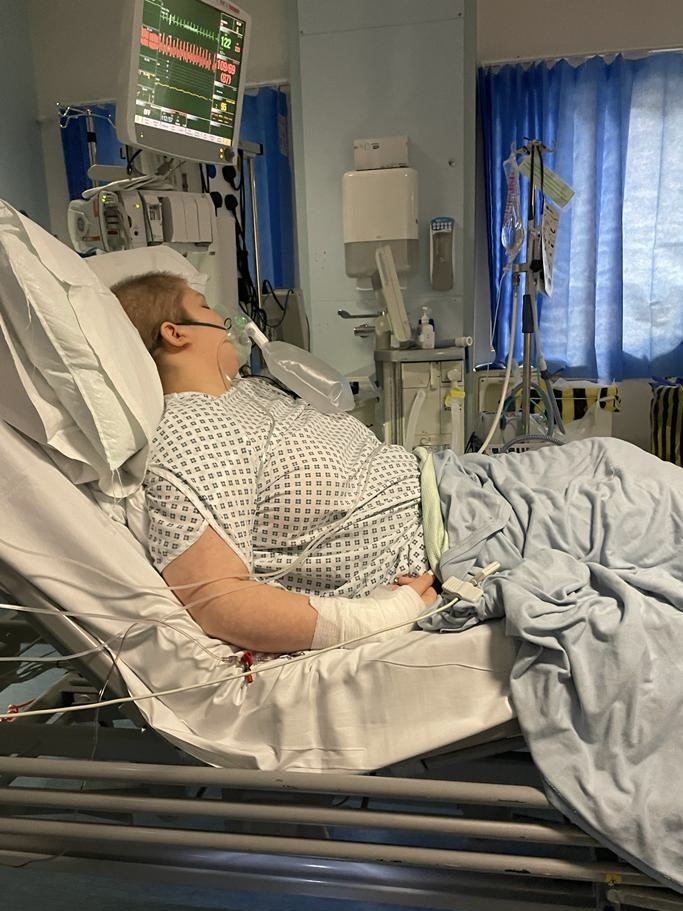My proton beam therapy story
Lucas
Lucas was 20 when he was diagnosed with a brain tumour. Here he talks about what it’s like to have proton beam therapy.
I’m Lucas, and when I was 20 I was diagnosed with a brain tumour. The news scared me a lot.
Everyone’s way of dealing with it is different. Mine was to focus on reassuring those around me. Telling everyone else it was going to be fine made me feel it was going to be alright, and that’s helped me through the process of beating this illness.
I was very fortunate that the tumour hadn’t spread. I had surgery to remove it and spent about four weeks recovering in hospital. Then on my 21st birthday I was sent for further treatment at The Christie hospital in Manchester – one of only two high energy proton beam therapy centres in the UK.
Proton beam therapy is a type of radiotherapy that’s used for certain types of cancer, like brain, head and neck cancers and sarcomas. It uses a beam of protons (small parts of atoms) to target a tumour really precisely which means there’s less damage to the area around the tumour.
I was taken to Manchester by my mum, with my fiancé. The hotel room that the hospital provided had two bedrooms and a large living space with a table and kitchen, so it could accommodate all of us comfortably. The next day I had to be at the hospital for 9 am, so I used the minibus provided and went for my first of two preparation days.
This was the first time I had to deal with my cancer diagnosis, rather than just recover from my surgery, and it made me tearful. I had a meeting with my oncologist, Dr Pan, and my key worker, Amy, where they outlined what was ahead, and this helped reassure me that I was only going to get better. The next step was to have my mask and vac bag fitted.
I needed to have a mask made to keep my head in the same position for treatment. It was made by moulding some plastic around my face. I also had a headrest to help make the mask more comfortable. I didn’t even see my mask until after my treatment, but it is so good to have. It’s one of a kind and is like a trophy displaying what I had to go through to get it!
Next, my vac bag was made. This is a blue bag, filled with small polystyrene balls, which moulds around your body to help keep you in the same position during treatment. I had a quick CT scan and some tiny dots tattooed on me to help line me up with the lasers. One of the radiographers then took me to the gantry, which is where I was going to be treated, to show me what to expect.
This was the first time I had to deal with my cancer diagnosis and it made me tearful.
It was like going into a spaceship! There were surround sound speakers that I could play my music from and the bed was mechanically controlled to swing me under the gantry. I recommend watching videos on how this takes place because it is unique, but it’s painless and is just a good excuse to lie there and listen to your music!
I was able to go home for a week before treatment started. I felt quite familiar with the process after a few days, and I was also doing some physio and occupational therapy as well. My treatment lasted six weeks. I had 13 longer sessions treating my head and spine which sometimes took over two hours, but then the final 17 were very quick, lasting about fifteen minutes each. I counted my treatments from the beginning and soon got through them.
At the hospital there was a games room and one of the staff members, Pete, would often come and play chess with me. Angie, Teenage Cancer Trust’s Youth Support Coordinator, used to come and play cards too. They really helped to keep my mind off of treatment. Angie also worked with her colleague, Steve, to help me go and watch a couple of Premier League matches at Old Trafford, which helped break treatment up.
Eventually I finished my treatment and rang the bell. It was so great to see everyone who’d helped me all in one place, and they even gave me a chocolate hamper to enjoy over Christmas.
My advice to anyone about to go through proton beam therapy is to power on and you will get better. Thank you for reading about my experience.
Visit our information page to find out more about the different types of brain tumours that can affect young people.



